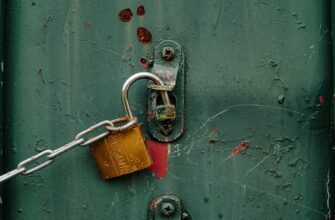- Why Encrypting Your Cold Storage Private Key Is Non-Negotiable
- Cold Storage vs. Private Keys: Crypto Security Essentials
- Step-by-Step: Encrypting Your Private Key for Cold Storage
- 7 Non-Negotiable Encryption Best Practices
- 5 Costly Mistakes Beginners Make (And How to Avoid Them)
- FAQ: Cold Storage Encryption Demystified
Why Encrypting Your Cold Storage Private Key Is Non-Negotiable
Imagine your cryptocurrency wallet as a digital vault. The private key is the only master key that unlocks it. Leave it unprotected, and you’re handing thieves a blueprint to your life savings. Cold storage—keeping keys offline—is the first layer of defense. But encryption adds an impenetrable second lock. Even if someone physically steals your hardware wallet or paper backup, encrypted keys remain useless gibberish without your passphrase. For beginners, this isn’t optional—it’s your financial armor.
Cold Storage vs. Private Keys: Crypto Security Essentials
Cold storage means storing private keys completely offline, away from internet-connected devices. Common methods include:
- Hardware wallets (e.g., Ledger, Trezor): USB-like devices that generate and store keys offline
- Paper wallets: Physical printouts of QR codes containing keys
- Metal plates: Fire/water-resistant engraved backups
Your private key is a 64-character alphanumeric string (e.g., E9873D79C6D87DC0FB6A5778633389...) that mathematically controls your crypto assets. Unlike passwords, it can’t be reset if lost or stolen.
Step-by-Step: Encrypting Your Private Key for Cold Storage
Method 1: Encrypting via Hardware Wallet (Recommended)
- Initialize your device and write down the 24-word recovery phrase on paper
- Enable passphrase encryption in settings (called “25th word” or “hidden wallet”)
- Create a strong 6+ character passphrase mixing uppercase, symbols, and numbers
- Confirm the passphrase—device now encrypts keys internally
- Store recovery phrase and passphrase separately (e.g., phrase in a safe, passphrase in password manager)
Method 2: Manual Encryption for Paper/Metal Wallets
- Generate keys offline using trusted software like Bitaddress.org (download and run air-gapped)
- Encrypt keys using AES-256 via tools like GPG4win (Windows) or OpenSSL (Mac/Linux):
openssl enc -aes-256-cbc -salt -in privatekey.txt -out encrypted.key - Print the encrypted key (not the original!) as QR/text on paper/metal
- Memorize your passphrase or store it digitally separate from encrypted keys
7 Non-Negotiable Encryption Best Practices
- Passphrase complexity: Minimum 12 characters with mixed cases, numbers, and symbols (e.g.,
Blue@Moonlight_42!) - Zero digital traces: Never type unencrypted keys on internet-connected devices
- Physical separation: Store encrypted keys and passphrases in different locations (e.g., home safe + bank deposit box)
- Redundancy: Create multiple encrypted backups on paper + metal stored in fireproof containers
- Verification test: Decrypt a backup once (offline!) to confirm functionality before funding wallets
- No cloud storage: Avoid uploading encrypted keys to email, notes apps, or cloud drives
- Silence is security: Never share encryption methods or storage locations with anyone
5 Costly Mistakes Beginners Make (And How to Avoid Them)
- Weak passphrases like “password123″—use diceware phrases or random generators
- Storing keys and phrases together—a fire/theft could wipe you out
- Assuming hardware wallets auto-encrypt—most require manual passphrase setup
- Using screenshot backups—malware can steal images; only physical copies
- Ignoring decryption tests—discovering errors after losing access is too late
FAQ: Cold Storage Encryption Demystified
Q: Can I recover funds if I forget my encryption passphrase?
A: No. Unlike exchanges, decentralized wallets have no “forgot password” option. Lose your passphrase = permanent asset loss.
Q: Is AES-256 encryption really unhackable?
A: With current technology, yes. AES-256 would take billions of years to brute-force. Your passphrase strength is the real vulnerability.
Q: Should I encrypt keys on a USB drive instead of paper?
A: Not recommended. USBs degrade and fail. Paper/metal with proper storage lasts decades. If using digital media, pair with physical backups.
Q: How often should I check my cold storage backups?
A: Verify integrity annually. Check for physical damage and test decryption (offline) every 2-3 years.
Q: Can I reuse the same passphrase for multiple keys?
A: Absolutely not. Unique passphrases per wallet limit damage if one is compromised.
Final Tip: Treat encrypted cold storage like a priceless artifact. The 30 minutes spent setting this up properly could prevent a lifetime of regret. Your future self will thank you.








